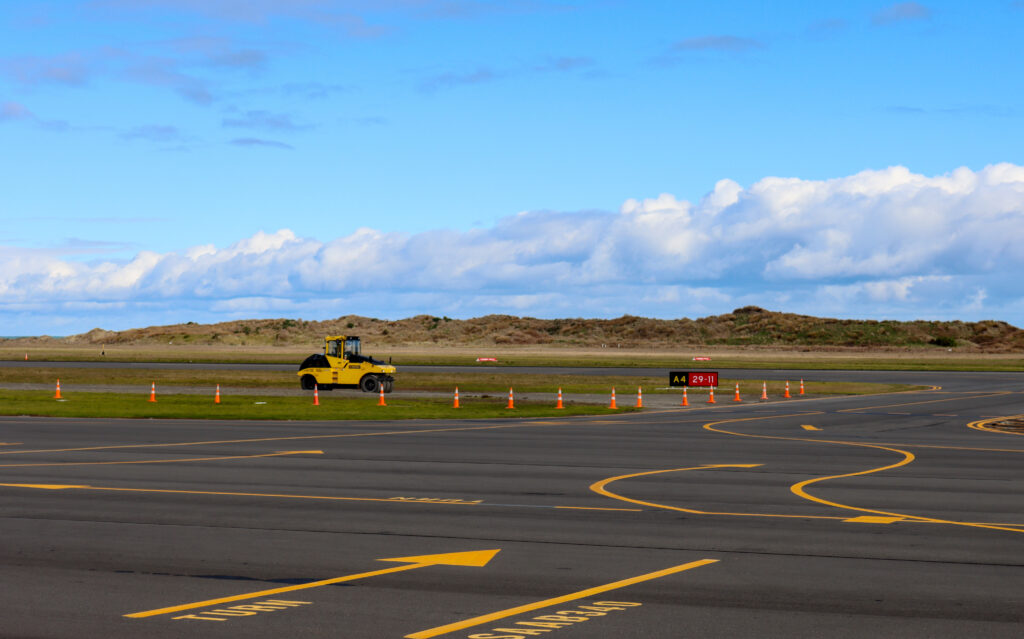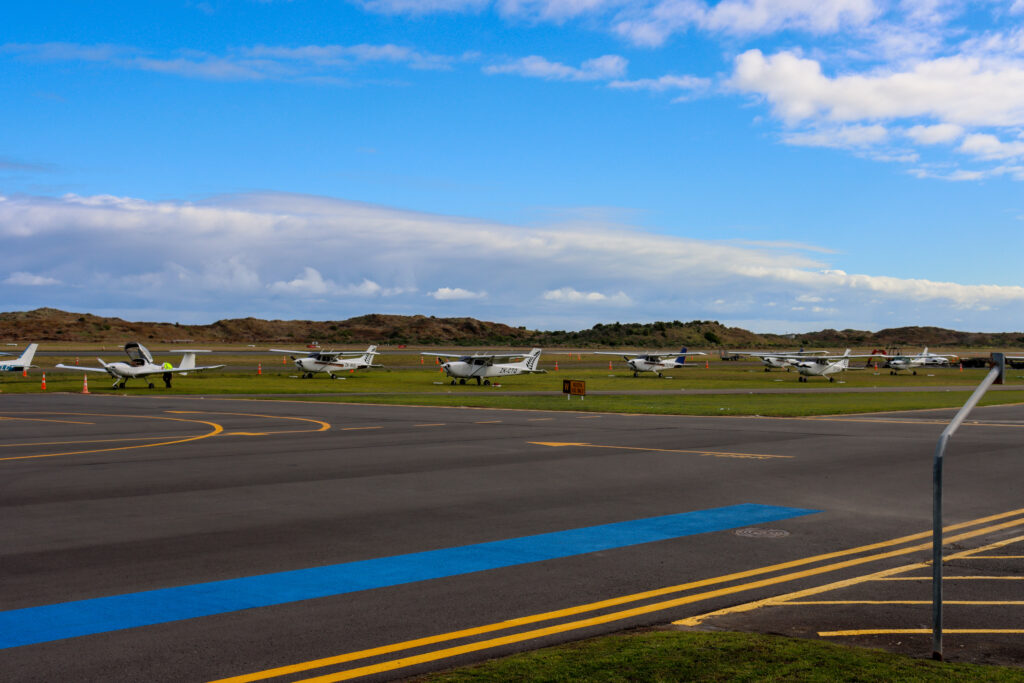
By Moana Ellis, Local Democracy Reporting
Taxpayers will fund half of a new $6.7 million taxiway for Whanganui Airport.
The Government has announced $3.35m funding to complete construction of a sealed parallel taxiway, which will reduce the risk of collisions at the airport.
The remaining funding has come from Whanganui District Council, which runs the airport in a joint partnership with the Ministry of Transport.
The council pressed ahead with stage one of the project after the Ministry initially declined to fund its half.
On Monday, Associate Transport Minister James Meager said the investment would address long-standing safety concerns by reducing the need for aircraft to backtrack on the active runway before take-off and after landing.
“This new taxiway will reduce the risk of collisions and make flying in and out of the site safer for both pilots and passengers,” Meager said.
“It will also reduce aircraft congestion and improve resilience by providing an all-weather replacement for the grass taxiways.”
Making the decision now would potentially save local ratepayers hundreds of thousands of dollars by keeping stage one construction contractors on-site to complete the taxiway safety improvements.
‘It’s important we take active steps to improve connectivity, address workforce shortages, and make it easier for aviators to operate in New Zealand.’
The new taxiway was recommended in a 2019 report and signed off in the council’s 10-year plan for 2024-2034.
Whanganui Airport was a vital regional hub for medical flying, Meager said.
It also hosts New Zealand’s largest international flight training school, the New Zealand International Commercial Pilot Academy (NZICPA).
The academy resumed flight training operations recently after an investigation by the Civil Aviation Authority (CAA).
“The NZICPA has … demonstrated its commitment to providing a high-quality, safe training facility that we need to meet the growing demand for commercial pilots,” Meager said.
“Aviation is critical to New Zealand’s domestic economy, which relies on air travel for connectivity, tourism and economic growth. It’s important we take active steps to improve connectivity, address workforce shortages, and make it easier for aviators to operate in New Zealand.”

Mayor Andrew Tripe said Whanganui Airport was one of New Zealand’s busiest regional airports in terms of flight movements.
The new taxiway would improve safety, enhance regional connectivity and aid economic growth for the region.
Tripe said the new funding was “a massive coup” for the district.
“To get Government funding for anything these days is very challenging. This will invest $3.35m into our economy to complete construction,” he told Local Democracy Reporting.
“That is really important for our airport and, despite its current woes, we hope the flight school will have a strong future here.”
Tripe said the CAA flagged up safety concerns after flight movements increased at the airport.
“With more planes in the air, they required safety mitigations. A parallel taxiway was the preferred option to address that.”
Other options to cap the number of flights or establish a control tower were rejected.
Transport logistics
Tripe said the new sealed taxiway would help future-proof the airport and strengthen Whanganui’s transport logistics capability.
At the end of May, Air Chathams and the council agreed to work on a business case for the airline to make Whanganui its headquarters.
“We’d be very keen to see an aeronautical hub at the airport, with Air Chathams based there,” Tripe said.
“To have an airport that is able to invest in its future is important not only for passenger numbers in and out of Whanganui but also for moving primary products and manufacturing goods in and out of Whanganui quickly.”
Tripe said the airport improvements would strengthen the district’s ability to link Whanganui’s port, rail and air logistics with regional transport connections in Palmerston North.
Meager acknowledged the advocacy of local Whanganui MP Carl Bates, who had worked with the Government, council and local operators to get the investment over the line.
“His dedication to serving his local community has been critical.
“This is a significant step forward for regional connectivity. By providing funding for this development, we’re investing in the future of the Whanganui region and community, boosting economic opportunities and improving access for residents and visitors,” Meager said.
Awa FM – Te Reo Irirangi o Whanganui
For more of our people, our stories, our way, click News or follow us on Facebook.
